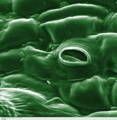"This is the forest primeval. The murmuring pines and the hemlocks,
Bearded with moss, and in garments green, indistinct in the twilight"
Henry Wadsworth Longfellow
Forests and Our Well-Being
On a day-to-day basis, we may only think a little about the impact of forests on our lives. But forests are integral to the overall health and well-being of people and societies. In 2012, the United Nations general assembly declared March 21st the International Day of Forests to celebrate and raise awareness of forests' vital role on our planet and remind everyone that they must be protected.

Nature's Pharmacy:
Forests are nature's pharmacies. Many medicines are derived from forests, and much of the world's population still relies heavily on herbal & natural health remedies. The UN estimates 25 percent of medicinal drugs used in developed countries are plant-based, and in developing countries, as much as 80 percent. There are over 50,000 varieties of plants with identified medicinal value, many of which come from forest ecosystems.

Nature's Water Filter:
When you turn on your faucet, do you think about forests? Well, you should. Forests filter water, with almost 75 percent of the world's accessible fresh water coming from forested watersheds. Woody plants (and their soil microbiome partners) are excellent at removing pollutants, such as metals, pesticides and oils, from soil and water and using them for growth or storing them in their wood. A Penn State study found that "a single sugar maple growing roadside removed 60mg of cadmium, 140mg of chromium, 820mg of nickel, and 5200mg of lead in a single growing season."

Nature's Air Filter:
As previous Blog Posts discussed, trees are intimately connected to the soil microbiome. Trees nurture and support myriad fungal, bacterial, and small animal populations in the soil adjacent to their roots. Through the symbiosis with the soil microbiome, trees complete their job of filtering the air of pollutants.
How so?
Each day (as part of the process of photosynthesis), tree leaves 'inhale' CO2 from the air and 'exhale' oxygen (O2) and water vapour (H2O) through the open stomata under their leaves (see image). This respiration process traps airborne soot and pollutants inside the leaves. Think of every leaf on every tree as a miniature air filter. And just like the air filter in the furnace of your home, sooner or later, each leaf will become plugged with the gunk it has filtered from the air (and will need to be changed). This is accomplished every autumn when the leaves fall from the tree to the ground – and here is where the microbiome in the soil is called into action.

Partners in the Soil:
Trees themselves cannot digest or break down the waste gathered in their leaves, and they turn to their partners in the soil to do this work. First, Insects, grubs, and worms chew up a fallen leaf and haul it down into the soil. Once these larger creatures are done with it, bacteria and fungi will make a meal of the leaf fragments – breaking down the large waste molecules trapped in the leaf into harmless (beneficial) smaller molecules and atoms. The pollutants trapped in in the fallen leaves are converted into an integral part of the nutrient cycle in soil by living communities of creatures large and small. Boom!

The role of Conifers:
Fun Fact: This 'Air Filtering' process is accomplished not just by deciduous trees (that drop their leaves every fall) but by coniferous trees as well. The difference is that many conifers take more than a year to drop their 'needle-like' leaves. The misunderstanding stems from the fact that 'Conifers' are often called 'Evergreens' – when the term 'conifer' denotes a plant that produces Cones to protect and disperse its seeds. The truth is, no Conifers are Evergreen (when you look at individual leaves or needles).
In the case of the conifer Larch (Tamarack), the 'needles' it produces each spring turn a brilliant yellow and drop in the fall of that same year (just as deciduous tree leaves do). White Pines drop the needles produced every spring in the fall of the following year (they remain green and on the tree for 18 months). Spruce Trees can hold their green needles for up to 5 (or even) 7 years before they fall. So, conifers are not actually 'evergreens.' Many just take a while longer to let their leaves go - and drop them down and into the recycling plant below them.
Along with their triangular shape (that minimizes surface area) a waxy coating also protects conifer 'needles' from dehydration in winter. This paraffin coating is challenging for the soil microbiome to break down. It explains why there is always a spongy bed of fallen needles under all conifers. Only the oldest (deepest) layer of fallen needles (in direct contact with the soil) can be broken down and digested. So, once again, the insects, worms and soil microbiome do their job of recycling conifer needles (and their payload of air-captured pollution). Breaking down waxy conifer needles is not as easy for the soil microbiome; but the work gets done quietly and efficiently, nonetheless.


Preventing Pandemics:
Forests can also help protect the planet from future pandemics. Abundant forests help create a natural barrier to protect against the spread of zoonotic infectious diseases. According to the World Wildlife Fund, deforestation and land-use change are linked to around 33 percent of new and emerging diseases. Forest loss increases the chance of new infectious diseases by concentrating on animal populations rather than allowing them to have distinct population groups. Keeping healthy, thriving forests can be foundational in building a healthy, thriving society.
Transpiration:
Forests produce rain. Through the process of photosynthesis, the stomata in leaves inhale CO2 and 'exhale' oxygen (O2) - and they also 'exhale' a great deal of water vapour (H2O). In fact, 97-99% of the water that plants draw up from their roots into their leaves escapes from open leaf stomata as water vapour – 97-99% of it! This' loss of water' is called Transpiration. On the face of it, this seems incredibly wasteful or inefficient – but no – not a bit. In fact, it's clear that forests not only engineer the soil environment to serve their needs – but forests (and prairies) also engineer the weather to be what they need; forests and prairies create their own rainfall.
Let it Rain:
Think of the Canadian example here. We all remember this from Grade 3 Science Class; the warm, wet air flowing eastward onto Canada's west coast is driven up by the Rocky Mountains, where it cools and gives up its payload of water as a nearly continuous rain or snowfall. This creates the conditions for BC's great and wondrous coastal rainforest. But what now? That air from the Pacific (now emptied of its humidity) continues eastward over the Rockies into the Great Plains. By rights, there should be a dry desert east of the Rockies – but there isn't. As a result of the tonnes and tonnes of water Transpired into the atmosphere by the forests and prairies east of the mountains, the dry air is re-hydrated – and rainfall is generated. Canada's forests and prairies create the weather they need. Boom!

Tall Trees are Layin' Down:
However, the world's forests are under threat. According to the UN, "every year, our planet loses 10 million hectares of forests, roughly the same area as the entire Republic of Korea." There has been much national attention in Canada, with Canadian icon Neil Young speaking out recently about the old-growth forests under threat in Fairy Creek, BC, where thousands of old-growth cedars are being threatened by logging and clear-cutting. Canada is in a unique position of stewardship, as almost 30 percent of the world's boreal forests belong to Canada. We explore how trees support and sustain each other in our previous blog - Important Lessons from Nature #1.

Reducing C02:
Deforestation has devastating effects relating to climate change, as forests are unique "carbon sinks", absorbing twice as much carbon as they emit every year. More than half of global carbon stock from soils and vegetation comes from forests containing 662 billion tonnes of carbon. The planet needs these ecosystems to reduce C02-related warming. We take a deeper dive into the role plants play and the science behind C02 reduction in our blog post for International Reducing CO2 Emissions Day.
1 Billion Trees:
Root Rescue Founder Bob Reaves serves as Soil Microbiome Advisor to Flash Forest, a leading innovator in drone-powered reforestation. Partnered with Flash Forest, Root Rescue is fighting to protect and increase forests in Canada. Using Root Rescue Transplanter in the Flash Forest's Drone-Delivered Seedpod technology, Flash Forest is showing proven results in their efforts to plant 1 billion trees by 2028. Read more about the effectiveness of Root Rescue Transplanter in this study conducted by the University of Guelph.

Be a part of the Solution:
• Organize or join a group working to support reforestation and forest protection in Canada
• Plant trees in your community
• Join the international conversation by using the #INTForestDay hashtag on social media
And once you've done all that, turn around and go back outside and plant more trees!
Live and let live!

Learn More On our youTube Channel
Root Rescue Learning Channel




